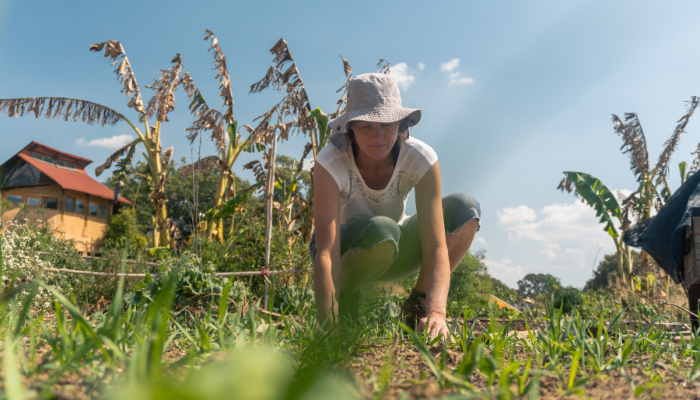How to Grow Scallions from Bulbs to Harvest
Scallions, also known as green onions, are a type of onion that has a mild flavor and a long, white shank. They are easy to grow and can be harvested in just 60 to 80 days from planting. You can grow scallions from seeds, onion sets, or purchased plants, but one of the simplest and most economical ways is to grow them from bulbs. Here are the steps to follow:
How to Grow Scallions from Bulbs

Step 1: Prepare the Bulbs
You can use the white ends of scallions that you buy from the grocery store or farmers market. Cut off the green part and leave about an inch of the white part with the roots attached. You can also use the bulbs of regular onions that have started to sprout.
Step 2: Plant the Bulbs
You can plant the bulbs in a pot or on the ground. Choose a sunny spot with well-draining soil. Make sure the soil is loose and fertile. You can add some compost or organic fertilizer to enrich it. Plant the bulbs about an inch deep, with the roots facing down and the cut end sticking out. Space them about 2 to 3 inches apart.
Step 3: Water and Weed
Water the bulbs regularly to keep the soil moist but not soggy. Avoid overwatering or underwatering, as both can affect the growth and flavor of the scallions. Weed the area around the bulbs to prevent competition for nutrients and moisture. You can also mulch the soil with straw or grass clippings to retain moisture and suppress weeds.
Step 4: Harvest and Enjoy
You can start harvesting scallions when they are about a foot tall and have a few inches of white shank. You can either pull them out by the roots or cut them off at the soil level. Use a sharp knife or scissors to avoid damaging the plants. You can harvest scallions as needed throughout the growing season. You can also regrow them by replanting the roots in water or soil.
Scallions are a versatile and delicious vegetable that can be eaten raw or cooked. You can use them to add flavor and color to salads, soups, stir-fries, omelets, and more. You can also make your own scallion pancakes, scallion oil, or scallion butter. Scallions are rich in vitamin C, vitamin K, folate, and antioxidants. They can help boost your immune system, lower your blood pressure, and prevent infections.
How to Store Harvested Scallions?

There are different ways to store harvested scallions, depending on how long you want to keep them and how you plan to use them. Here are some common methods:
- To store scallions in the fridge for up to a week, you can place them upright in a jar of water and cover them with a plastic bag. This will keep them crisp and fresh
- To freeze scallions for up to 6 months, you can chop them into small pieces and spread them on a baking sheet. Then, transfer them to a freezer bag or container and seal tightly. This will preserve their flavor and color.
- To store scallions in a damp paper towel, you can wrap them loosely and place them in a plastic bag or container. This will keep them moist and prevent wilting.
How Do You Know if Scallions Have Gone Bad?
You can tell if scallions have gone bad by looking at their appearance, smell, and texture. Some signs of spoilage are:
- The green part turns yellow, brown, or black.
- The white part becomes soft, mushy, or slimy.
- The roots are dry, shriveled, or moldy.
- The scallions have a sour, rotten, or musty odor.
- The scallions have a bitter, metallic, or off taste.
If you notice any of these signs, you should discard the scallions and not eat them. Eating spoiled scallions can cause food poisoning or other health problems.
How many times can you regrow scallions from bulbs?
You can regrow scallions from bulbs several times, as long as the roots are healthy and intact. However, the quality and flavor of the scallions may decline after each harvest. To ensure a continuous supply of fresh scallions, you can plant new bulbs every few weeks.
Can you grow scallions indoors?
Yes, you can grow scallions indoors in a pot or a glass of water. You just need to provide them with enough sunlight, water, and nutrients. You can place them on a sunny windowsill or under a grow light. You can change the water every few days or add some liquid fertilizer to the water. You can also transplant them to a pot with soil when they have enough roots.
What is the Best Time to Plant Scallions?
The best time to plant scallions depends on your location and climate. In general, scallions can be planted in both the spring and fall, when the soil temperature is between 45 and 75 °F (7 and 24 °C). Scallions grow quickly and can be harvested in 60 to 80 days from seeding. Scallions can also overwinter in zones 4 to 9 and regrow in the following season.








